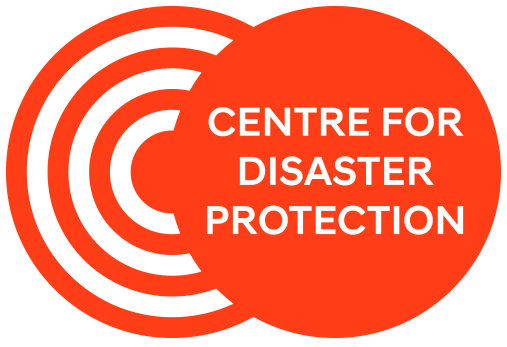Putting people first in disaster risk finance – the Centre's new accountability guidance
Author: Sophia Swithern
Photo: Women involved in community meeting to discuss village reconstruction. Yogyakarta, Indonesia. Credit: Nughrohu Nurdikiawan Sunjoy, World Bank
Two years ago, the Centre for Disaster Protection started a discussion about accountability in disaster risk financing (DRF) with a review of what it meant for the sector. One of the things we heard was that there was a need for tailored guidance to translate accountability into action. So, last month, the Centre published Accountability Guidance: Making Disaster Risk Financing Work for Risk-Affected People.
Being accountable is being responsible for using power and resources. It involves taking into account the views of people affected by your decisions and actions or inactions and being able to be held to account for the consequences of your decisions and actions. For DRF, protecting to the most risk-affected people means applying a great deal of power and resources through often complicated chains of decision-making and action.
Since the Centre began investigating what accountability means for the DRF community, we’ve seen growing understanding of its importance. And we’ve witnessed coalitions and agencies commit to being more accountable – both because they see it as an important principle in its own right but also as a means to improve the trust, credibility and effectiveness of financing instruments.
Notably, accountability is one of the founding principles of the Global Shield against Climate Risks. This joint G7 and V20 initiative involves some of the most influential DRF actors. It seeks to increase protection for vulnerable populations through an inclusive, country-led process that includes the needs and perspectives of vulnerable and affected groups. As a central tenet of climate justice, transparency and accountability to affected communities has featured strongly in international climate negotiations on Loss and Damage following the historic decision at COP27 in November 2022 to set up a new Loss and Damage Fund.
Putting such commitments into practice, however, is complex and thus rare. Our previous review of accountability in DRF revealed that efforts have been patchy, that there appeared to be an inversely proportionate relationship between the degree of attention to accountability and the financial size of investments, and that strategic end-to-end accountability was rare, with efforts clustered around single measures, for example, putting in place complaints hotlines.
Living up to commitments to be accountable is difficult for at least three reasons:
Accountability hasn’t been a clear priority;
the nature of DRF (technically specialised, ex-ante arrangements involving a complicated configuration of stakeholders) makes it tricky; and
there is a lack of shared tools to translate high ideals into practical measures.
The Centre’s new guidance on accountability addresses this gap by providing an accessible framework that applies core elements of accountability to the specificities of DRF instruments. The guidance is designed to support anyone involved in DRF, including practitioners, policymakers, designers and implementers. Whether you are promoting, designing, delivering, evaluating or advocating for better DRF initiatives, this guidance is intended to support your work.
What do we mean by accountability?
Accountability is often used as a catch-all term which means different things to different people. Our guidance breaks it down into three ‘dimensions’ and three ‘directions’:
How should we use the guidance?
The guidance maps the six dimensions of accountability onto ‘docking points’ (see the figure below) - from the ‘money in’ end of modelling risk and pre-positioning funds, through to the ‘money-out’ end of disbursement and expenditure. At each docking point, we set out the aims of improving transparency, participation and answerability and suggests a series of performance questions and indicators that could be used in the design and performance of instruments.
In developing the guidance we drew on the expertise of a range of experts working directly on designing and delivering DRF instruments. However, given the wide and changing landscape of DRF instruments, we are clear that we should provide a tool that can be adapted to fit instruments and organisations. Therefore, the guidance is deliberately flexible. We do not pretend that it provides a simple recipe for achieving some ideal state of accountability, and we highlight some of the difficult questions that putting it into practice might pose. For example, what forms participation and answerability might take in contexts where pay-outs from sovereign DRF are made to governments but where opportunities for the ‘last mile’ of accountability to risk-affected populations are not evident.
Our hope is that as more stakeholders apply the guidance to their work, it will generate evidence about what works and how to unstick the problem areas – and that we can feed this into an iterative process of use and improvement. After all, an ongoing process of listening, learning and adapting is an inherent part of being accountable. So, as you explore and implement the guidance, please get in touch with our Associate Director of Evidence, Lydia Poole (lpoole@disasterprotection.org), to share your experience and suggestions and to join us as we build a growing community of practice committed to making disaster risk financing work for risk-affected people.



